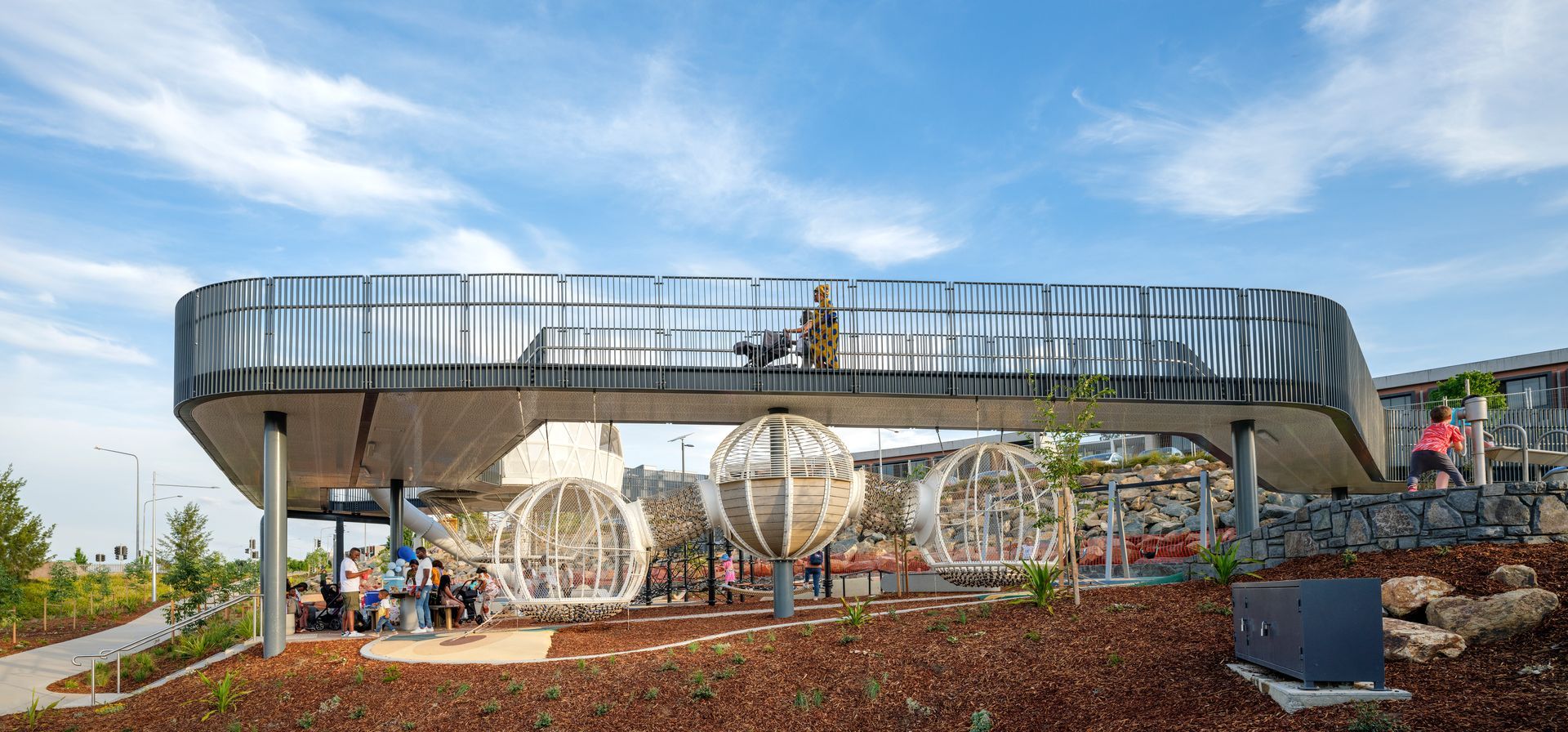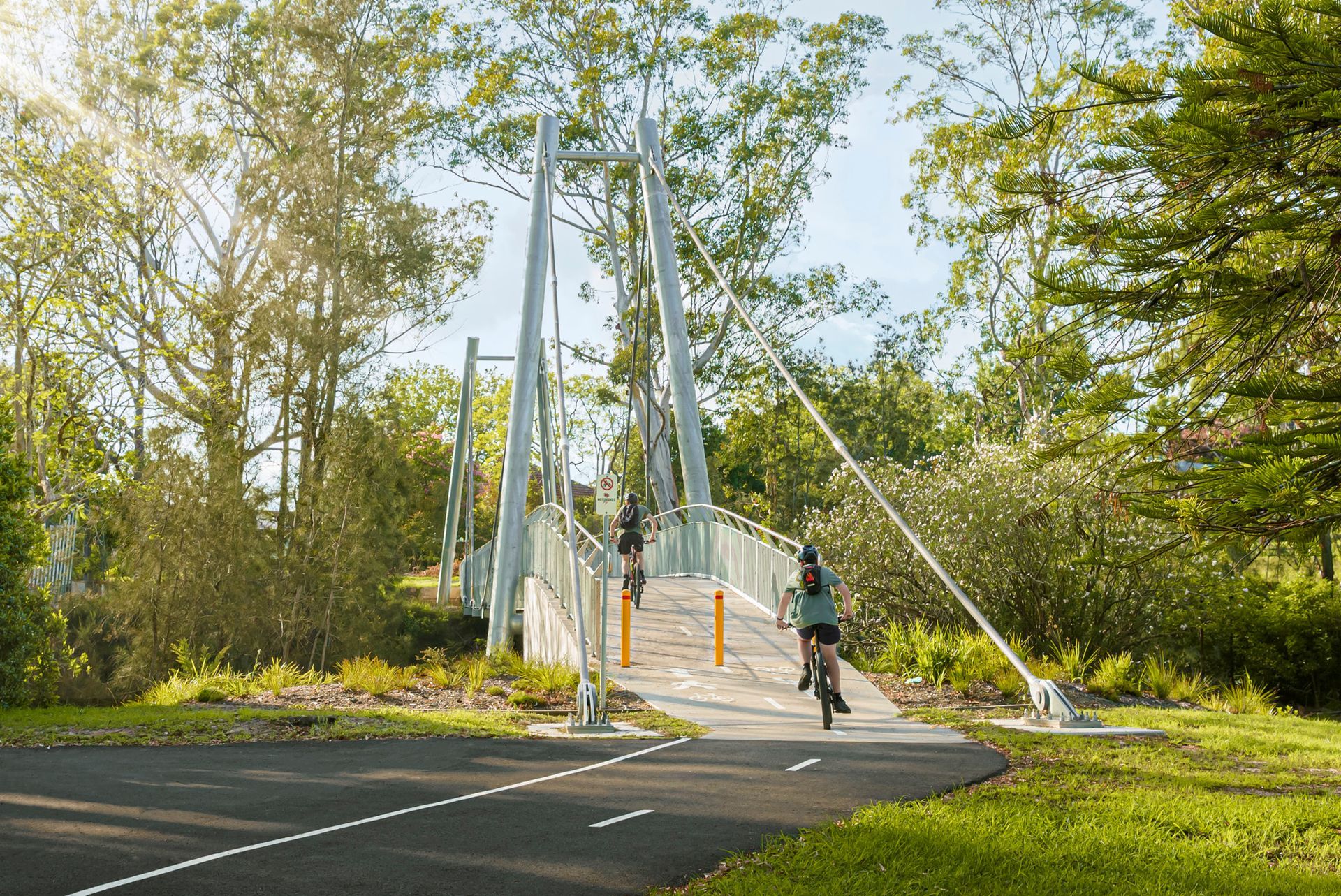Unpacking the Bridge Code: The Engineer’s Perspective
Discussing the scope – and limitations – of the Bridge Code with Liam Sacco, Principal Structural Engineer with global infrastructure provider, Cardno.

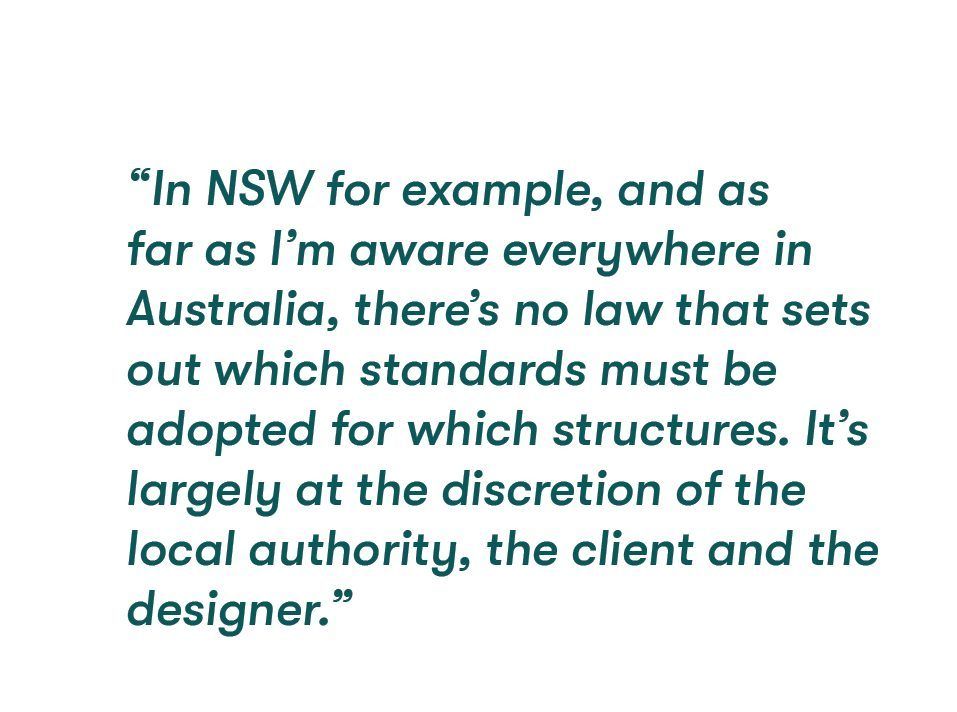
During his 14-year career as a Structural Engineer, Liam Sacco – BEng (Civil) Hons – has overseen the successful delivery of countless bridge and boardwalk projects. Today, Liam works as a Principal Structural Engineer and Team Leader with Cardno in Sydney, where having an in-depth understanding of Australian Standards plays a critical role in his team’s success. He was kind enough to speak with us, sharing his professional thoughts on AS 2156 (The Walking Track Standard) and why it offers a highly effective – yet frequently underutilised – alternative for many bridge and boardwalk projects.
FLEETWOOD: Liam, looking at the scope of the Bridge Code, or AS 5100, it quite specifically mentions pedestrian and cycling bridges. It seems black and white, but it’s actually only a guideline, isn’t it?
LIAM SACCO: That’s correct. When most people think about construction regulation in Australia, they tend to think of the Building Code of Australia, or the National Construction Code (NCC) as it’s now known. That’s a really prescriptive legislated document that references all the Australian Standards that must be adopted – by law – when you design a building. However, when you get to landscape structures, like pedestrian bridges and boardwalks, it’s very different. In NSW for example, and as far as I’m aware everywhere in Australia, there’s no law that sets out which standards must be adopted for which structures. It’s largely at the discretion of the local authority, the client and the designer. We’ve always used the scope of the Bridge Code document as a guide for when we can use it, rather than when we must use it. It’s a really important distinction.
FWD: You’ve worked with a lot of developers and councils on these types of projects. Do you find there’s a level of nervousness about deviating from AS 5100?
LS: There can be, and as simple as this sounds it often comes down to the name. If people are calling their structure a ‘bridge’ and there’s an Australian Standard called the ‘Bridge Code’, they’re reluctant to move away from that because it seems entirely appropriate. I completely get it.
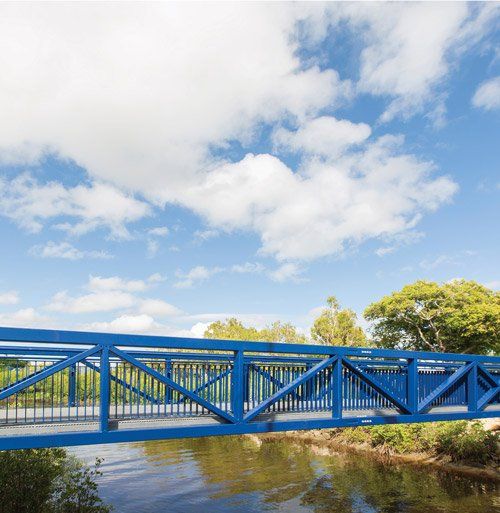

FWD: As an engineer, why might you want to use a standard like AS 2156 instead of the Bridge Code for a pedestrian or cycling structure?
LS: There are a few reasons. But the really big one relates to Section 10 of the Bridge Code – Minimum Restraint Load. It states there’s a minimum load you have to apply where the superstructure (the bridge deck) connects to the substructure (footings, supports and walls). Going sideways – by that I mean a lateral load across the bridge – the Bridge Code says the minimum load should be 500 kilonewtons. That equates to about 50 tonnes, which is simply massive, far more than most structures will ever require. There are absolutely some situations where you do want that load and, to be fair, the Bridge Code does say you can reduce it to 20 tonnes if your structure is over a river that’s only of low velocity. But what happens when you’re not over a river, or road, at all? The Bridge Code doesn’t provide a definition of what ‘low velocity’ actually means either!
FWD: It sounds like there are holes everywhere.
LS: Exactly. While I’m not the author of these documents, I think pedestrian bridges are ancillary to what they were thinking about when they were written. Certainly, the Bridge Code is mainly targeted at roads and rail bridges. Pedestrian applications are definitely not the primary purpose of AS 5100, whereas with AS 2156 they are.
From an engineering perspective, the requirements of AS 5100 can make some designs really hard to achieve, especially if you’re trying to do something interesting within a defined budget. It might be an arbitrary load that has no practical application for the proposed structure in the real world, but if you’re designing to AS 5100, you’ll still have to apply it.
FWD: That can fundamentally change the whole nature of a project.
LS: Absolutely. You’ll be scratching your head wondering, ‘what is this meant to reflect?’ Let’s say the structure is part of a river crossing. We’ll calculate scenarios and design loads for the forces of water that may flow over the bridge. For example, what if a bridge upstream washes off its support and actually hits our bridge? What if there’s a shed just floating down the water and smashes into it? We absolutely cover these scenarios. But what happens if the structure is sitting in a quiet park and the only thing it’s crossing is a marshy swale that isn’t part of a flood path? It just doesn’t make sense to stay rigidly bound to AS 5100 – especially when there’s nothing that says you have to be.
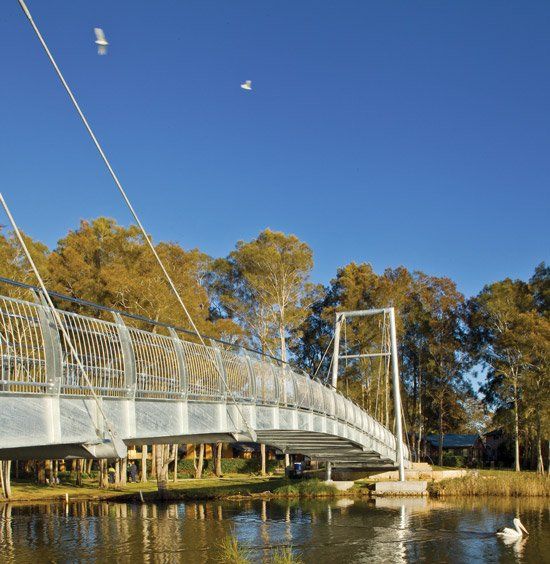
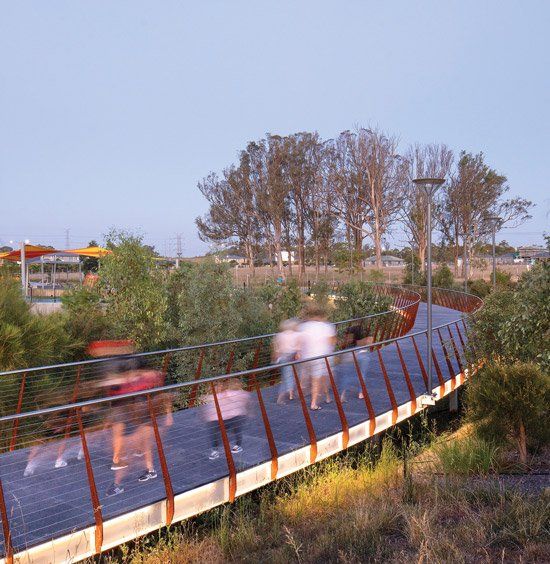
Could you be using AS 2156?
While it isn’t appropriate for every bridge project, AS 2156 is often an option worth exploring in the planning stages. Fleetwood is highly experienced at working with both AS 5100 and AS 2156, so if you’d like to discuss their suitability for an upcoming project, please get in touch.
You may also find it helpful to download our handy ‘AS 5100 or AS 2156’ Ready Reckoner
HERE.
Large scale, high sensitivity
Given the sensitive habitat of the Dora Creek catchment, which flows into pristine Lake Macquarie, there were considerable environmental risks to be carefully managed. “As just one example, the sheer scale and height of the structure meant crane selection was especially important to avoid damage to the surrounding creek banks,” says John Dahdah. “Persistent wet weather, including flooding at the start of the construction window, also made site conditions quite treacherous at times.”
The bridge superstructure and towers were manufactured at Fleetwood’s state-of-the-art facility in Sydney, with pre-assembly in mid-August. Final installation was completed in September 2022 with the bridge set to open to the public in mid-November. A fantastic result for the project stakeholders – and the local Cooranbong community!
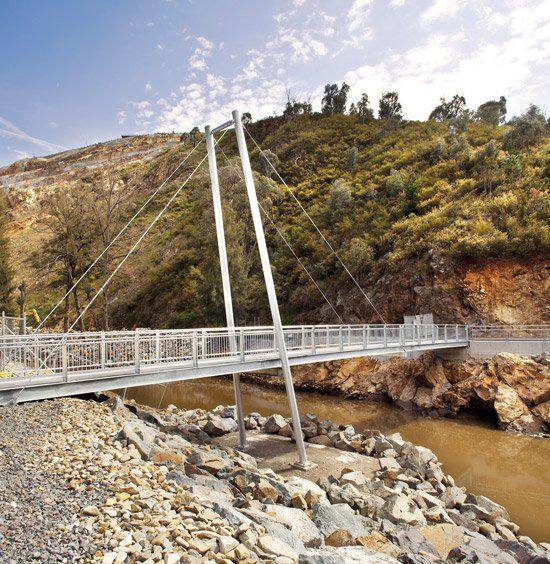

FWD: One concern we sometimes hear is, ‘if it’s only built to AS 2156, the quality must be inferior’. How would you respond to that – is an AS 2156 structure inferior?
LS: Not necessarily. The only real difference in terms of durability is the structure’s Design Life. A bridge delivered to AS 5100 does have a longer mandated Design Life of 100 years, whereas it’s only 50 years for a walking track bridge delivered under AS 2156. But it’s really important to remember Design Life doesn’t necessarily mean how long it’s going to last. It’s more related to those statistical one-in-100-year flooding or storm events. The longer the bridge is meant to be there, the more likely it is to cop a really big storm. It should mean there’s no major maintenance required in that time, such as replacing entire sections of the bridge. But it doesn’t mean no maintenance at all. For example, if it’s steel you’ll still have to repaint it at some point, regardless of which Australian Standard you use.
FWD: If a client was determined to have a 100-year Design Life, are there things you can do to modify an AS 2156 structure?
LS: Absolutely. Again because the standards are only guidelines, not law, you can mix and match as much as you want. That’s something I don’t think people always appreciate. You can say ‘we’re going to design to AS 2156’, but you can also say ‘we’re going to do it using the loading or Design Life standards from the Bridge Code’, and so forth. It doesn’t really change the process. Some of it comes down to the choice of materials, but it’s mostly an engineering consideration. By making a few key changes you can comfortably bring most AS 2156 structures up to 100 years.
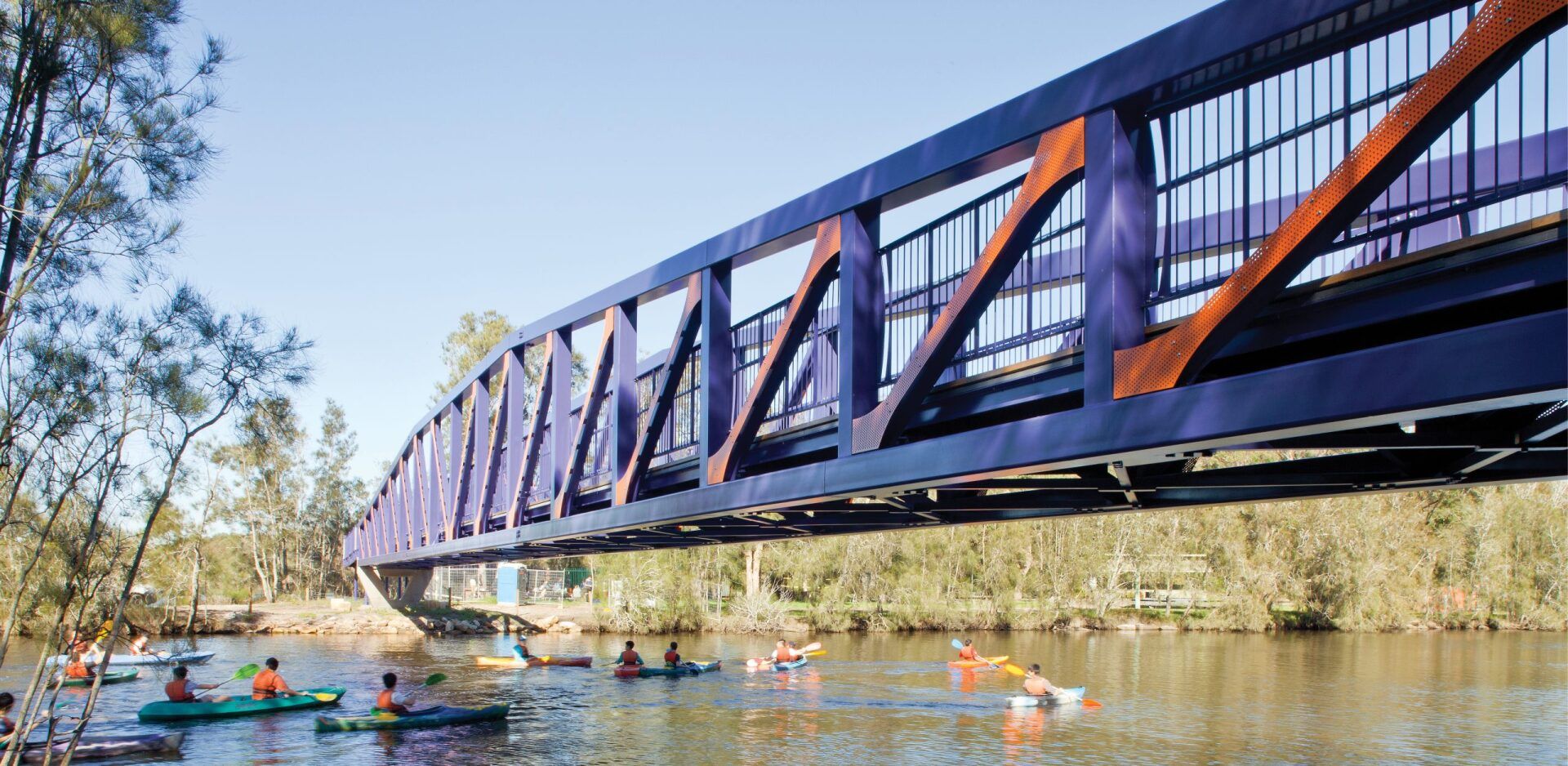
Slide title
Write your caption hereButton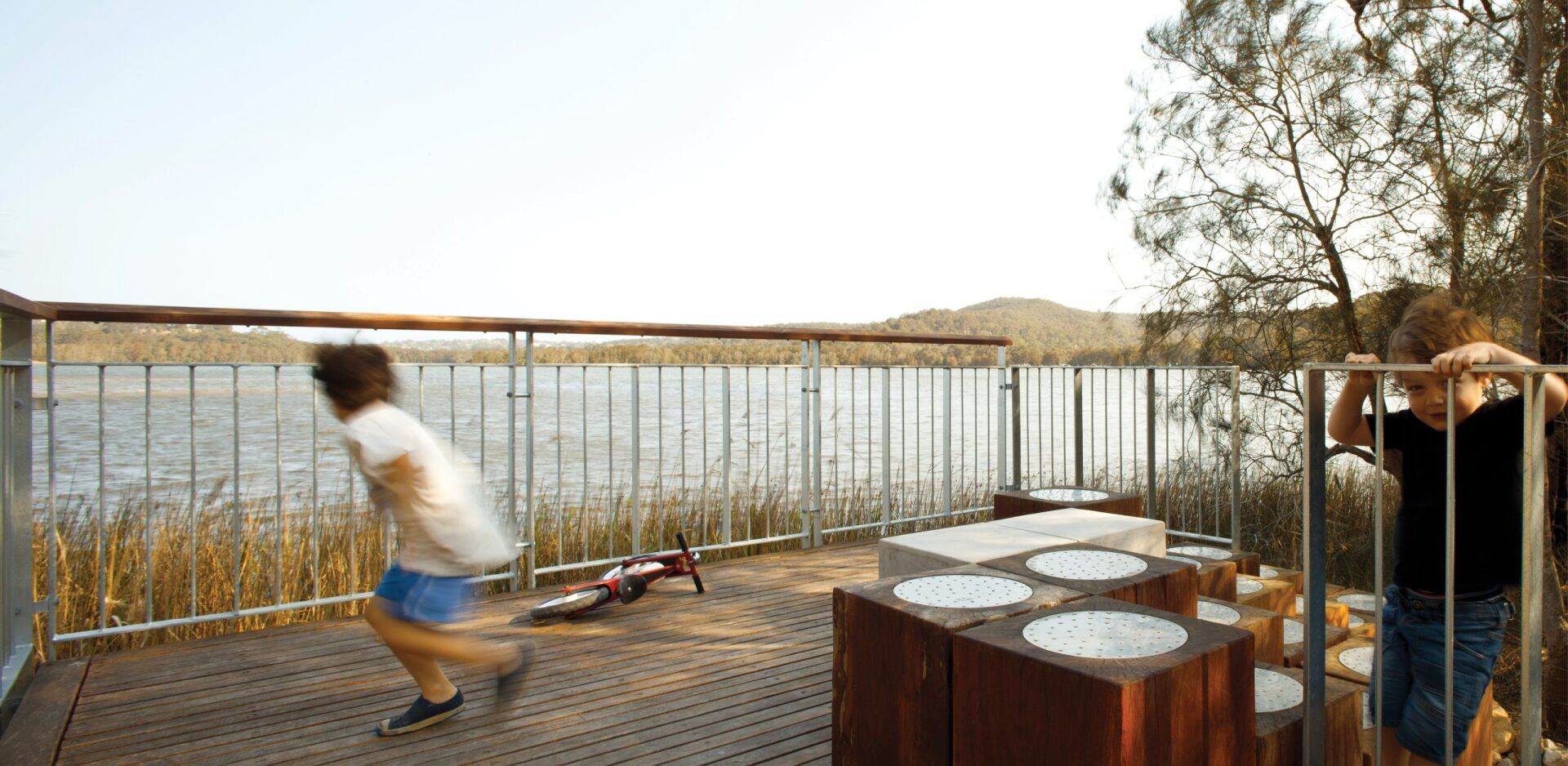
Slide title
Write your caption hereButton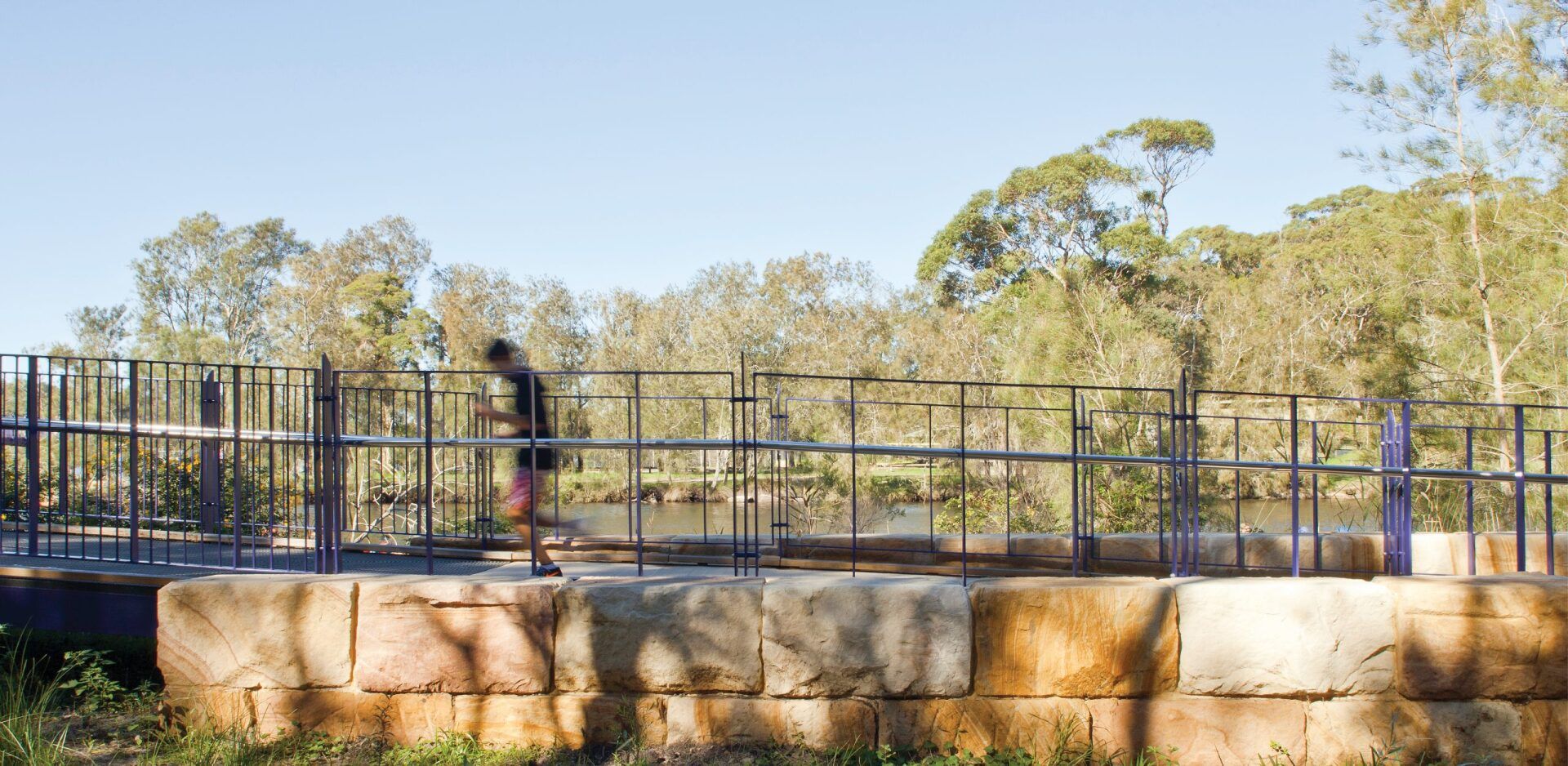
Slide title
Write your caption hereButton
Slide title
Write your caption hereButton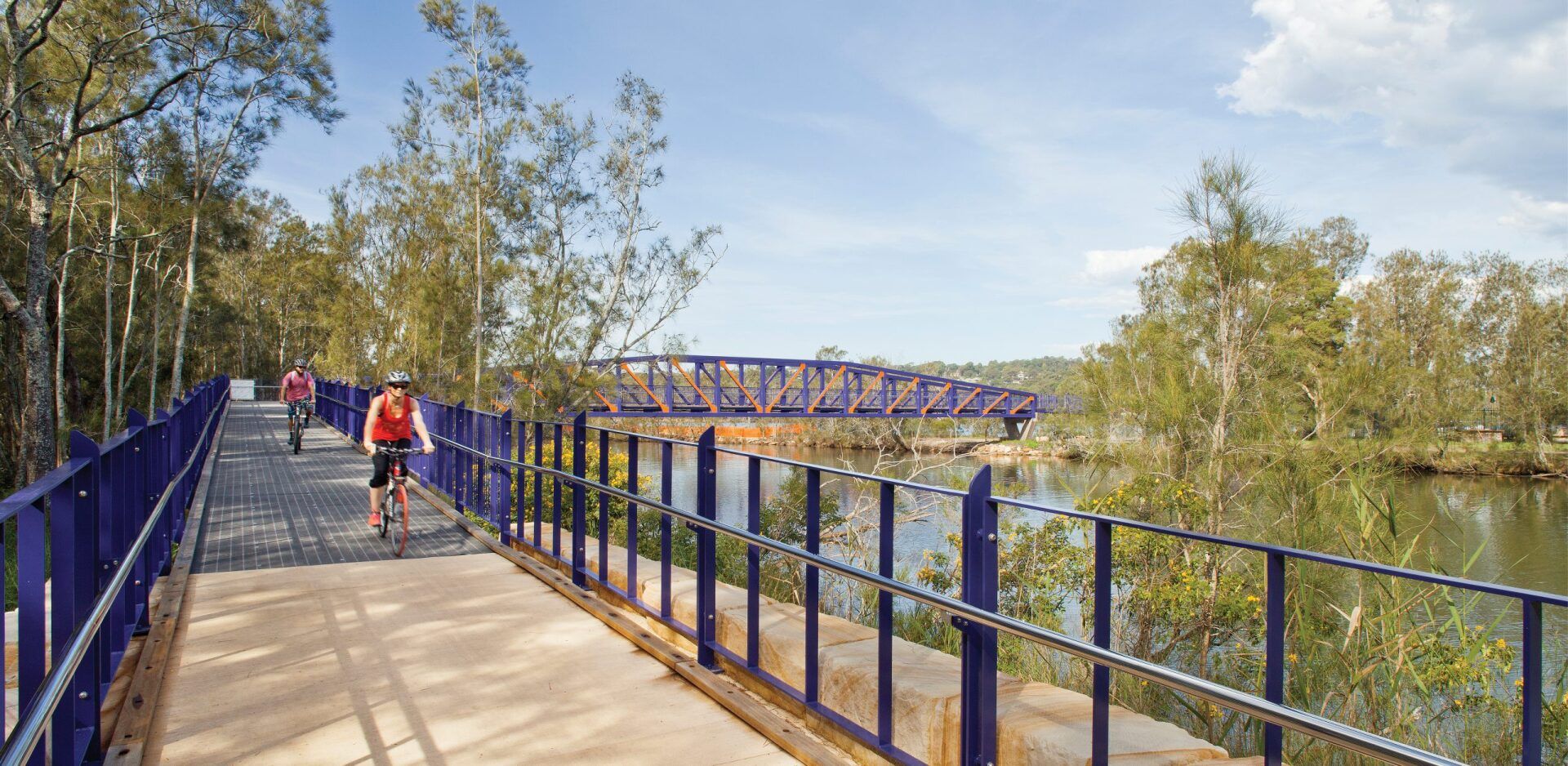
Slide title
Write your caption hereButton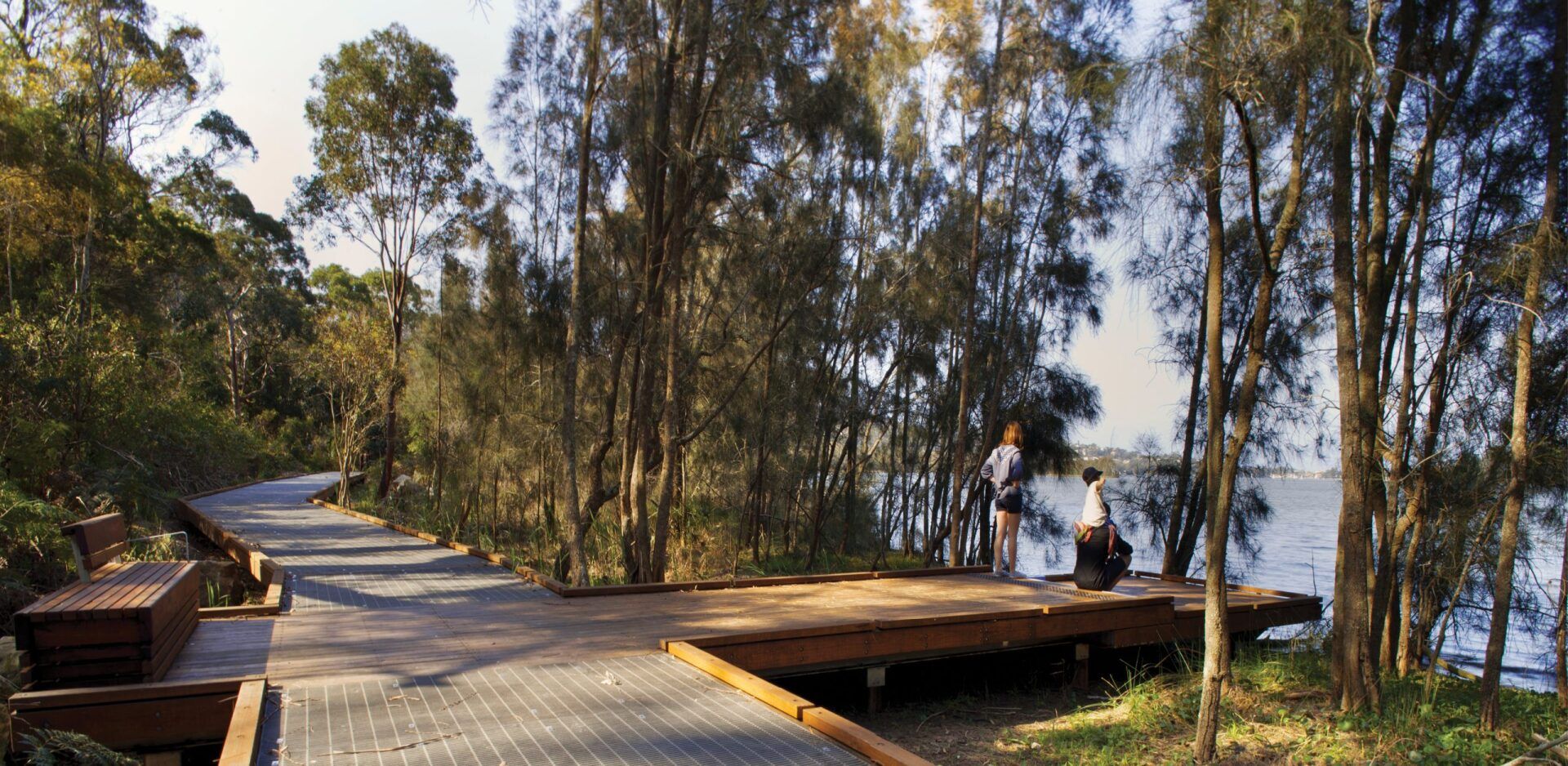
Slide title
Write your caption hereButton
Narrabeen Lagoon Stage 1 & 2, Narrabeen, NSW, used a mix of both AS 2156 and AS 5100
FWD: From your experience, how open do you find clients and councils are to using AS 2156, or a combination of AS 2156 and AS 5100, once they understand the details behind it?
LS: Sometimes a client will have a set requirement, perhaps they’ve sent out a contract that says ‘AS 5100’, and in those situations it’s contractual and you just have to follow it. But for the most part, when people are wanting a lightweight structure, I find they’re pretty open to it. When you explain these restrictions, a lot of clients are very happy to say ‘okay, we’ll accept that’. I find it’s usually a little easier for councils, because they’re the client and they’re also the local authority. It can be less straightforward if it’s a developer and you want to remove the lateral load requirement, because you’ll usually need to get council permission to do that as well. But it’s certainly very possible.
Often the best solution is starting with AS 5100, but then negotiating with the local authority to leave out certain clauses that are unnecessary or excessive, and likely to cause issues. A couple of times for us it’s been as simple as writing a letter to the council explaining why. That’s usually quite effective because they get the peace of mind that we’re still using the Bridge Code as a base, but they also know which parts are being omitted and why.
More from Fleetwood Files.
Explore
Certifications
Environmental Management : ISO14001
Quality Management : ISO 9001
OHS Management : ISO 45001
All Rights Reserved | Fleetwood Urban | Privacy Policy


